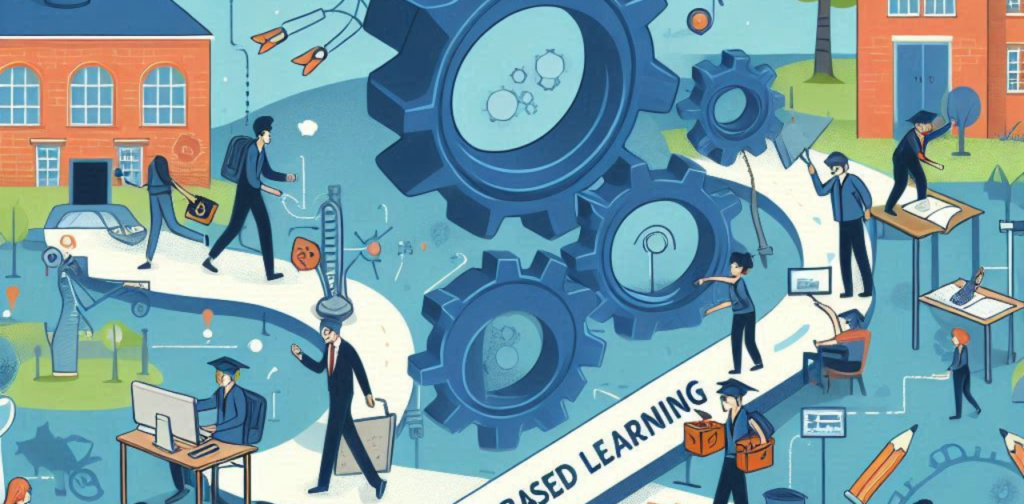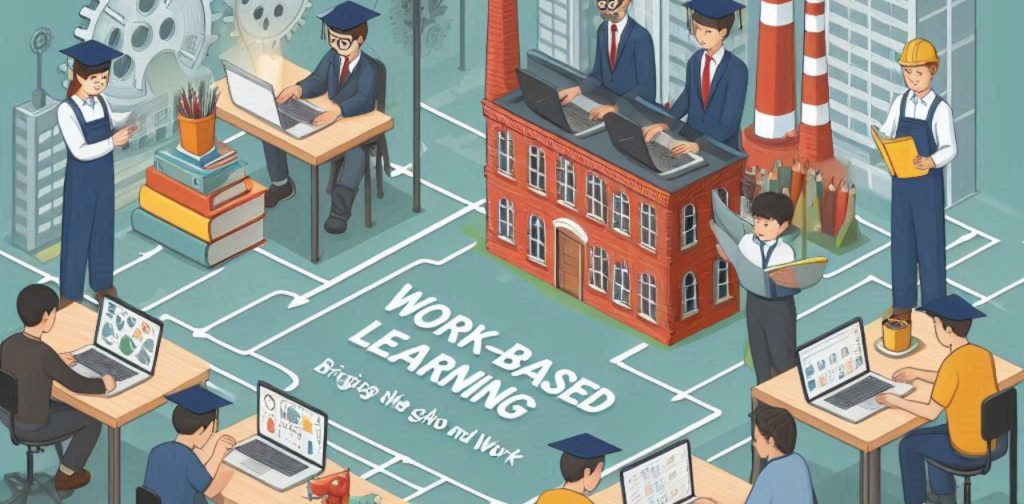Work-based learning: Bridging the gap between school and work
Introduction
Work-based learning (WBL) is an educational strategy that provides students with real-world work experiences where they can apply academic and technical skills and develop employability skills. It involves a combination of classroom instruction and practical experience, allowing students to gain valuable insight into their chosen career paths. WBL helps bridge the gap between education and employment, preparing students for successful careers.
Body
Work-based learning
involves a variety of experiences:

- Internships: Structured work experiences that provide students with opportunities to apply classroom knowledge in a real-world setting.
- Apprenticeships: Combine on-the-job training with classroom instruction, leading to industry-recognized credentials.
- Cooperative Education (Co-op): Alternate periods of academic study with paid work experience.
- Service Learning: Integrating community service with academic learning to meet community needs.
- Job Shadowing: Observing professionals in their workplaces to gain career insight.
Key benefits of work-based learning:
- Improved Employability: Develops job-ready skills and knowledge.
- Best Career Search: Helps students explore career interests and make informed decisions.
- Increase Academic Achievement: Connects classroom learning to real-world applications.
- Developed Soft Skills: Develops communication, teamwork, and problem-solving skills.
- Networking Opportunities: Establishes connections with professionals in the field.

Table: Types of work-based learning
| Type | Description |
|---|---|
| Internship | Structured work experiences |
| Apprenticeships | Combine on-the-job training with classroom instruction. |
| Cooperative Education | Alternate periods of study and work |
| Service Learning | Community service integrated with learning |
| Job Shadowing | Observing professionals at their workplaces |
Result
Work-based learning is essential to prepare students for the workforce and promote lifelong learning. By providing opportunities to apply classroom knowledge in real-world settings, WBL equips students with the skills, knowledge, and experience needed to succeed in their chosen careers.
Frequently Asked Questions
- What is the difference between an internship and a co-op?
- Internships are usually short-term experiences, while co-ops involve alternating periods of study and work.
- How can work-based learning benefit employers?
- Work-based learning gives employers access to a pipeline of skilled talent.
- What are the challenges of implementing work-based learning programs?
- Challenges include finding suitable work placements, ensuring student safety, and balancing academic requirements with work experience.
- How can work-based learning be made accessible to all students?
- By providing various work-based learning opportunities and offering support services to students with disabilities.
- What is the role of technology in work-based learning?
- Technology can facilitate virtual internships, online job boards, and connections between students and employers.
Work-based learning

is a valuable tool for bridging the gap between education and employment. By investing in WBL programs, schools, businesses, and communities can create a more skilled and prepared workforce.
Would you like to focus on a particular type of work-based learning or explore its impact on a particular industry or field?